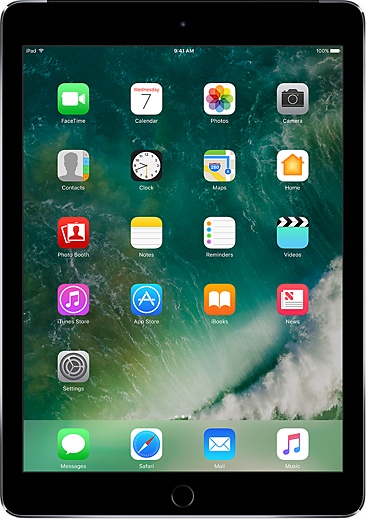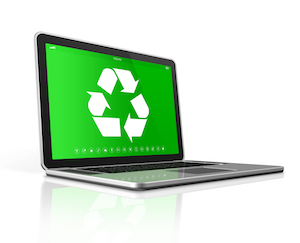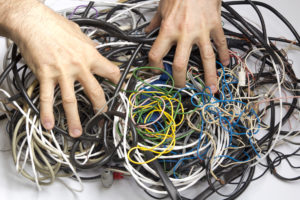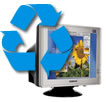 When Apple debuted its much-awaited iPad on Wednesday in San Francisco, one of the first attributes founder Steve Jobs touted was the gadget’s eco-friendly specs. But how “green” can an electronic device like this really be?
When Apple debuted its much-awaited iPad on Wednesday in San Francisco, one of the first attributes founder Steve Jobs touted was the gadget’s eco-friendly specs. But how “green” can an electronic device like this really be?
Greenpeace recently released its analysis of electronics manufacturers: Nokia and Sony Ericsson came out way ahead of the pack; Apple didn’t fare nearly as well. This excellent review from Inhabitat details the plusses and minuses of Apple’s overall approach to sustainability.
As for the iPad, we like that it contains no arsenic, mercury, PVC, or BFR (brominated flame retardant), nasty toxic chemicals linked to cancer and other human health problems. Jobs also claims the iPad is “highly recyclable” and features an energy-saving battery that can run for 10 hours on a single charge. That’s all good.
On the other hand, the gadget plays into a larger environmental problem: planned obsolescence, one that is not unique to Apple but perhaps best typified by it. In order to rake in the highest profits possible, electronics companies usually design their products with a lifespan in mind. That’s the amount of time the product will function before it breaks or ceases to be compatible with current systems. It’s also the amount of time before a new-and-improved incarnation (or “generation” in Apple-speak) is released. There’s a reason the iPhone has been dubbed “a slam dunk of planned obsolescence” by CrunchGear’s Seth Porges. Did you purchase one only to have a cheaper, better-equipped version be released not long after you bought the original?
We can already see the iPad’s trajectory. Within a year or two (if not sooner), the components on this geeky darling will no doubt start to wear out. Functionality will suffer. And not long after, Apple will unveil a newer, sleeker, shinier version that will be so irresistible, you’ll feel you just HAVE to have it.
Then what do you do with the “old” iPad? Many people will simply trash theirs. No wonder global e-waste (which also includes televisions, fax machines, computers and copiers) is forecast to reach 53 million metric tonnes by 2012.
Yes, the iPad is cool. It is hip. And for all the “early adopters” out there who are driving Apple’s markets, it’s probably nigh on irresistible.
But that sure doesn’t make it green.
Meanwhile, are you inspired to recycle? Start here.















8 thoughts on “Is the iPad just more e-waste?”
And of course with that big screen, and no protection, it;s surely only a matter of time before iPad screens start needing to be replaced on a regular basis. A netbook is so much more practical and sturdy.
Richard, That’s such a good point. Thanks for commenting.
Sure, Apple’s products are going straight to the trashbin in this home.. Just a waste anyway..:-)
Good point to ponder since Apple does not have recall policies of their old cell phones. I like the iPad but fears that it may slip off from my butterfingers otherwise more convenient than a laptop to carry around.
i agree with Richard. A netbook or laptop is a better option for a gadget compared to a tablet pc.
I really can’t see the benefits of an iPad. There’s no keyboard. You have to write directly on the screen, and that seems a little bit too cumbersome for me..
I actually received one for Christmas but returned it. I have no need for this product.
Of course, no one can favor the issue but yes, you are right that that go hand in hand with habitual use of the iPad and some of these are listed below:
Software damage: This is one of the issues that are mainly the result of improper use and downloading of files from untrusted sources.
Cracked or broken LCD screen: It is undeniable that this gadget has an attractive LCD screen but in spite of that, problems still arise because it is not resistant to scratches and can crack easily.
Comments are closed.